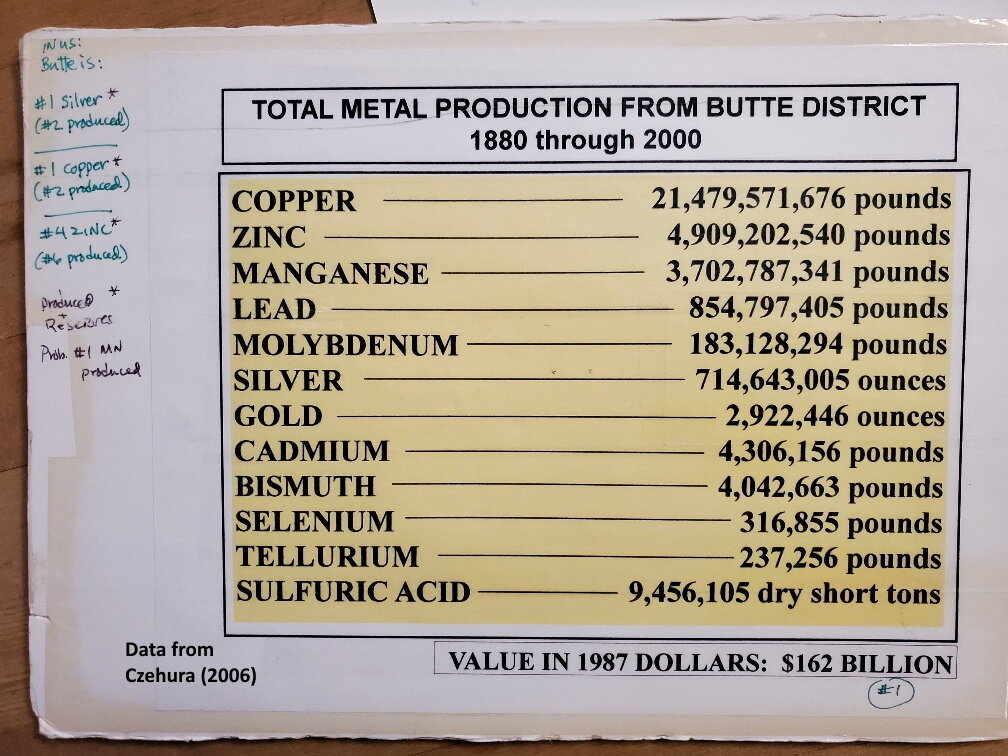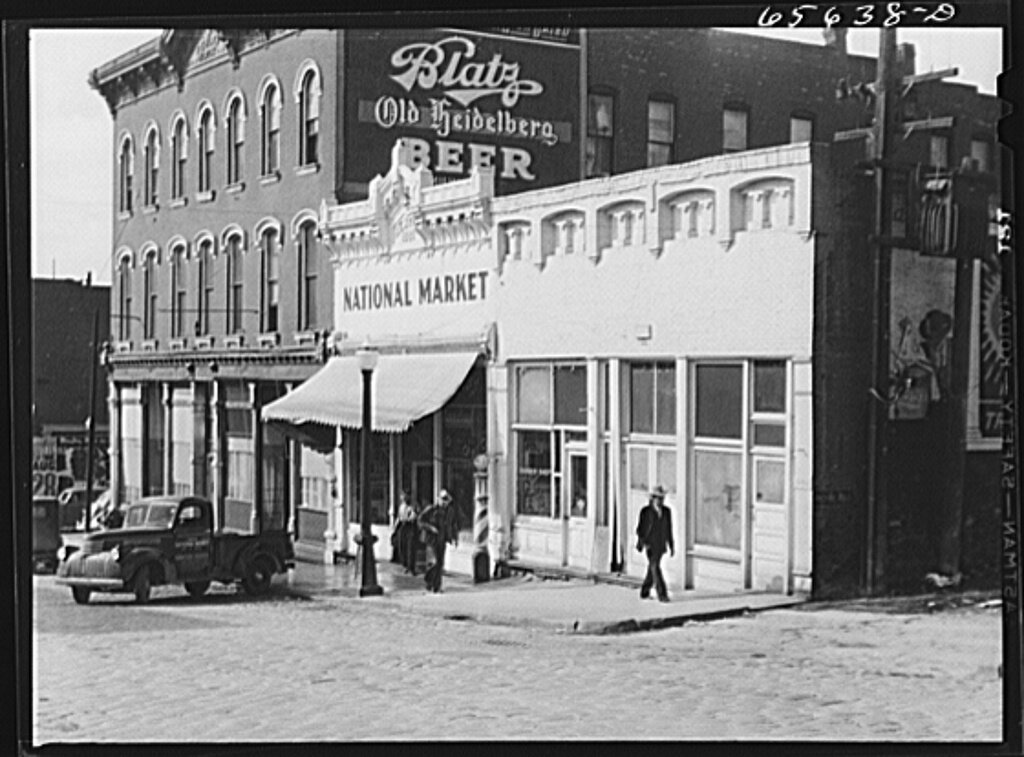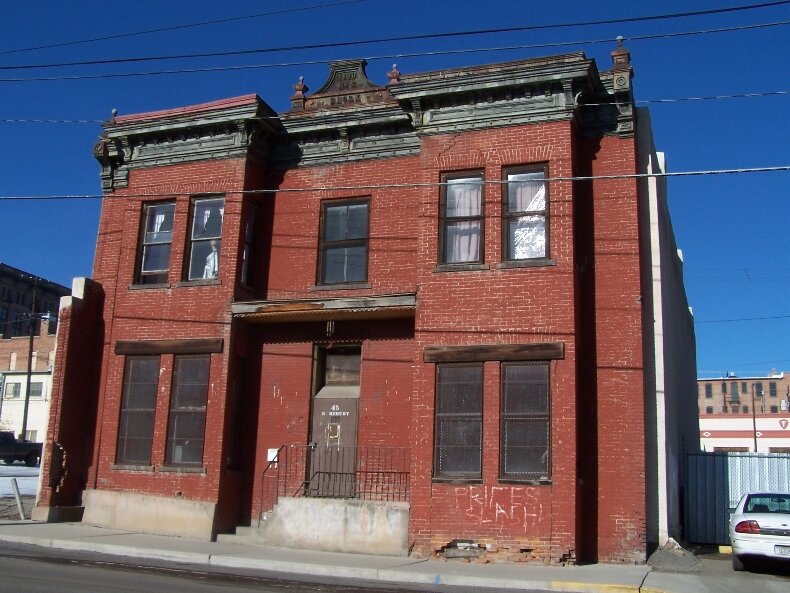
Butte, America’s Story Episode 300 - Richest Hill?
“The Richest Hill on Earth.” It’s an easy claim to make, and a remarkable thing for Butte to brag about. But is it true? The short answer is almost certainly “yes.” But as with all such claims, it does depend.

Butte, America’s Story Episode 299 - Bert Mooney
By 1919 Butte had an airfield, a dirt track called Marr Field near Lake Avoca and the Butte Country Club. Exhibition flights and flying instruction used it, and in 1920 the Anaconda Standard newspaper was flown from Anaconda to Marr Field. Eight years later, in 1928, commercial air travel came to Butte.

Butte, America’s Story Episode 298 - Columbia Gardens
The Columbia Gardens became the primary site for recreation not just in Butte but across the Northwest. In addition to the rides and beautiful floral designs in the landscaping, enhancing picnic areas, there was a zoo, museum, football and baseball fields, and a lake for boating. In 1906 a roller coaster, reportedly the largest in the Northwest, was constructed at the Gardens at a cost of $20,000, using imported southeast Asian ironwood.

Butte, America’s Story Episode 297 - Jere Murphy
Butte’s legendary chief of police, Jeremiah J. Murphy, died in the line of duty September 20, 1935. He had responded from the police office in the City Hall on Broadway street to a disturbance call at the Montana Power Company office at Granite and Main, just a block and a half away.

Butte, America’s Story Episode 296 - Jeanette Rankin
Jeanette Rankin boasts several firsts. She was elected to the US House of Representatives in 1916, the first woman in the nation to be elected to Congress. She was a life-long pacifist, and was the only person to vote against the United States’ entry into both World War I and World War II.

Butte, America’s Story Episode 295 - Clark & Daly’s Feud
It’s well known that Copper Kings Marcus Daly and William Clark didn’t get along, and that they were actually enemies in politics and business. What’s not clear is how it began, and why it seemed to be so much more than normal business competition.

Butte, America’s Story Episode 294 - Frank Stephens
The story goes that on a trip into Butte in 1890 he could find no lodging place, but he saw an abandoned hole perhaps with a partial foundation at the southeastern corner of Park and Montana Streets. He acquired the lot for $499 and promptly erected a nice three-story hotel with a tall turret facing the intersection.

Butte, America’s Story Episode 293 - Paul Clark Home
Clark ultimately allocated nearly $50,000 for a three-story home-office-hospital structure on South Excelsior Street. The only condition Clark placed on his gifts was that the facility should be named for his son, Paul, who had died in 1896 at age 16, from a bacterial infection that caused the painful rash called St. Anthony’s Fire.

Butte, America’s Story Episode 292 - Mules
“My sweetheart’s a mule in the mine, I drive her with only one line. On the dashboard I sit, and tobacco I spit, All over my sweetheart’s behind.”

Butte, America’s Story Episode 291 - First Policewoman
According to historian John Astle in his book, Only in Butte, Butte’s and Montana’s first policewoman was Miss Amanda Pfeiffer.

Butte, America’s Story Episode 290 - William Clark’s Senate Election
Copper King William Clark’s long-standing political ambitions came to a head in the election for US Senator in 1899. It was also the climax of his long-standing feud with his primary competitor in Butte, Marcus Daly.

Butte, America’s Story Episode 289 - North Main
The parking lot east of the Archives buildings wasn’t always a parking lot. In fact, in Uptown Butte, virtually no open spaces, parking lots, vacant lots, were open—there were buildings there.

Butte, America’s Story Episode 288 - Christmas in 1889
In December 1889, the Anaconda mine in Butte had been shut down for a month, boding ill for the economy, but by Christmas day in Anaconda, “the smoke [was] pouring out of the big stacks across the creek in volumes that gave ample assurance of a merry Christmas in the town.”

Butte, America’s Story Episode 287 - The Trolley System
Public transit in Butte started with horse-drawn railroad cars, but by 1888 steam-driven locomotives traveled around Butte and a cable car went up the hill on Main Street to Walkerville.

Butte, America’s Story Episode 286 - School of Mines
In addition to the contentious fight for the location of the state capital after Montana became a state in 1889, the legislature faced the political decisions involved in divvying up various state institutions. Not surprisingly, the School of Mines was assigned to Butte.

Butte, America’s Story Episode 285 - Quartz & Main
The southwest corner of Quartz and Main Streets in 1884 was a half-block west of the first house in Butte, and a half-block south of the new Miners Union Hall that was under construction.

Butte, America’s Story Episode 284 - First Airplane Landing
The first flight (at least until further research shows otherwise) was in 1911, by an aviator named Eugene Ely. Thanks to a tip from Tony Baumgartner, we know Ely flew in several exhibition flights in Montana during the summer of 1911, including Kalispell, Great Falls, Lewistown, Missoula, and Butte.

Butte, America’s Story Episode 283 - Red Light District
Butte’s long-lived red-light district represents a loss to which many would say “good riddance,” but like it or not, it was a vital element of Butte for more than a century.

Butte, America’s Story Episode 282 - Thanksgiving in 1892
The Theater Comique (present-day location of the southern part of Metals Bank building, on Main Street) held a “good-natured, surging mass of people” who saw the opening of an acrobatic performance by the Gillette Family, together with a performance by raconteur Professor Oofty Goofty.

Butte, America’s Story Episode 281 - Influenza
By Halloween, which was cancelled, there were more than 150 new cases every day and more than 20 deaths each day was commonplace. The newspapers had no room for the obituaries, and carried columns of short death notices.